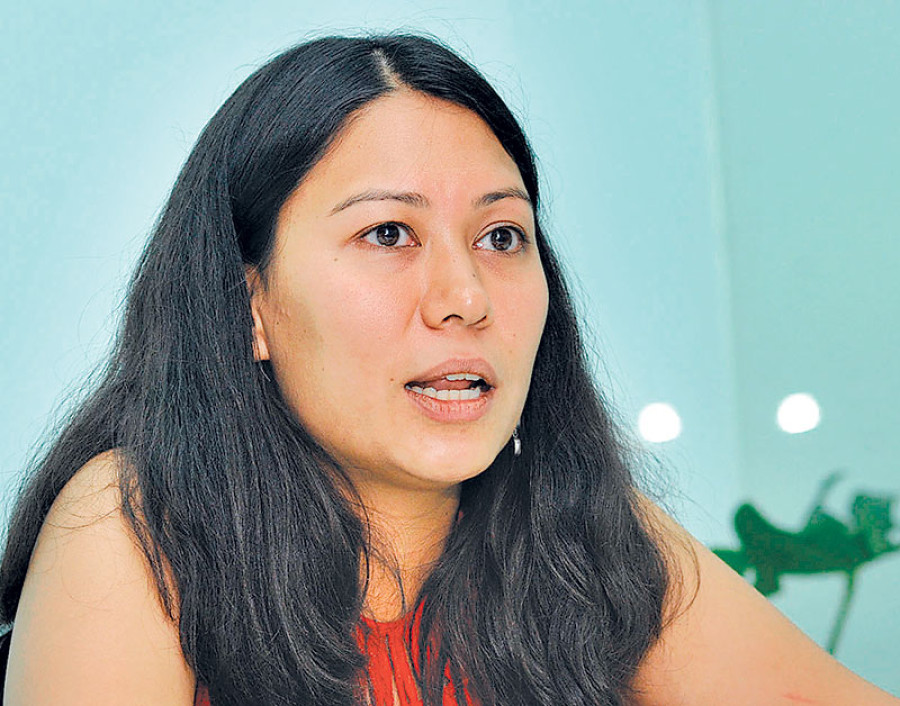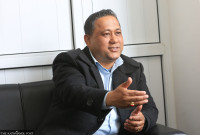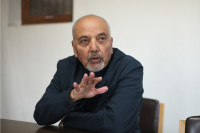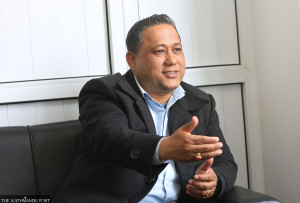Interviews
It’s easy to organise protests; the harder part is getting things done
Sumana Shrestha’s work for Medication for Nepal has gained praise from the likes of Barack Obama.
Sumana Shrestha’s work for Medication for Nepal has gained praise from the likes of Barack Obama. With the realisation that activism could lead to change in Nepal, Shrestha, who has an MBA from MIT Sloan School of Management, returned to Nepal and is involved in initiatives such as Rebuild Kasthamandap as part of a team of locals who have taken it upon themselves to rebuild the historical pavilion. Supriya Gurung and Shashwat Acharya spoke to Shrestha about her work, the level of activism in Nepal and its role in effecting change in the absence of an accountable government.
What’s your take on the level of activism in Nepal?
The rise in activism has to do with the quality of the services that the government is providing. For example, when the Rani Pokhari was supposedly being built, the entire structure was blocked off from the public. We were essentially kept in the dark about what was going on. We contacted the Department of Archaeology (DoA) and the Kathmandu Metropolitan City (KMC) and were told that the whole rebuilding process was being carried out in an appropriate manner. It was only when an activist managed to gain access and take photos showcasing the real situation that the public found out the abysmal quality of the work being carried out. So the quality of the services provided by the government is dismal, and this is what has contributed to the recent rise in activism. But we should note that activism is one of the easier things to do. It’s easy to organise protests; the hard part is to get things implemented.
You have been making headway though, especially in regard to Rebuild Kasthamandap and protests over construction at Rani Pokhari.
While we were successful in ensuring that Rani Pokhari would not be rebuilt in concrete, the current state of the 17th century structure is deplorable. We have still not managed to motivate people to build the structure properly and we still don’t have access to drawings or information.
In terms of Rebuild Kasthamandap, however, the news is more positive. We have learnt what needs to be done, and we have also learnt that there is a model that can be followed to effect change. Rebuild Kasthamandap is a registered organisation and we’re approaching the process systematically. We have a Memorandum of Understanding with the National Reconstruction Authority (NRA), the KMC and the DoA. We also have specific teams for lobbying, activism, technical aspects, etc. We are working through our own initiative; we are following specific guidelines and have communicated with the government that it is welcome to monitor, supervise, and criticise us. Give us a pat on the back if our work is worthy. But let us get on with it and rebuild Kasthamandap.
Is this model sustainable? Where would you get funds from?
Kasthamandap has a limited budget that can be collected from the community. And this model could be replicated for other temple structures that require rebuilding as well. For example, there has been no activism about the state of Maju-Dega and there have been no efforts to rebuild it. The same structure we have in place for Kasthamandap can be replicated successfully for Maju-Dega and other temple structures.
How do you motivate the common Nepali to become involved in such a movement?
Rebuild Kasthamandap held an event on April 22 that aimed to fill positions we saw as necessary to accomplish our goal. We formed 12 teams on the basis of areas ranging from technical aspects to documentation, communication, community representation, fund raising, government liaison, etc. There is literally a space for everyone to get engaged in one way or the other in Kasthamandap. We assigned volunteers to these teams on the basis of their expertise and interest. Over a hundred people—young and old—came to the event. This is a model that can be used everywhere, where the people are engaged to affect change. This is also why we have introduced the idea of public hearings, because people should be given the opportunity to voice their dissatisfaction. The problem is that, initially we had enough volunteers for all of these teams, but people look to get paid, and we didn’t have the money to pay them. We still don’t. So that makes it difficult to retain volunteers for a longer duration. My hope is that people will realise the worth of movements such as Rebuild Kasthamandap and decide to join of their own volition.
Can this model be expanded to other areas separate from rebuilding? Take for example, the issue of gender discrimination. Can activism help curb discriminatory practices?
We have so much latent energy and knowledge that is not being used, and it could definitely help. But it has to be understood that in dealing with issues such as gender discrimination, change has to come internally. Trying to impose change on a community never works. For example, simply telling people not to practise Chhaupadi is never going to work. This does not address the cause behind such practices. In our patriarchal society, if women take the subservient role and believe they are impure while menstruating, then it will be very difficult to instil change. The stigma people attach to periods has to be overcome and people have to be taught that periods are a result of biology. Perhaps if they are taught this, change will be seen in the upcoming generations.
But we also need to take a stand as a society. We can be a society that says anyone who practises Chhaupadi will be put in jail. Or, say, children who are abused are rescued and put into child protective services. These policies don’t exist. In the absence of these policies, it is very hard to do anything just through activism.
Do you see the government doing more at the community level in the future?
I don’t see anything immediate happening from the political side. I think if policies were pushed by alternative politics, then the government would be in a better place to help. The opposition can propose alternative approaches to the ones used by the current ruling parties, and these approaches can promote engagement. The government should give citizens who want to contribute a platform on which to engage. It should also have clearer guidelines on community engagement.
We should be able to make bureaucrats accountable. For this, higher level politics has to be improved. But in the meantime, other, smaller things can also be done at the grassroots level. Mayors, for example, have considerable power and can get quite a lot done if they have the will.
How optimistic are you that the new local level structure will improve things?
If we look at the budget, I don’t think that the new structure is properly decentralised. Local representatives have been given authority, yet have very little budget to implement things.
But on a separate note, I believe that one doesn’t have to be an elected representative in order to instil change. Where are all the aspirants who ran for mayoral positions? They had grand ideas while fighting elections, but where are they now? Do they really have to be in the seat of power to realise their aim of improving the situation? I don’t think so.
More broadly, I hope that the government will create a system to help those who are unable to help themselves. When we help those who are less fortunate than us, we are investing in our future, and we are also helping ourselves.
On a more philosophical note, what drives you to do the work you do?
I act because I am not satisfied with the way things are being done. I see that they should be done differently, and in that capacity I try to bring about change.




 13°C Kathmandu
13°C Kathmandu












